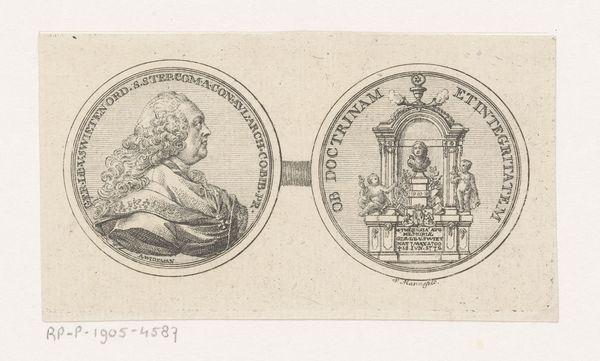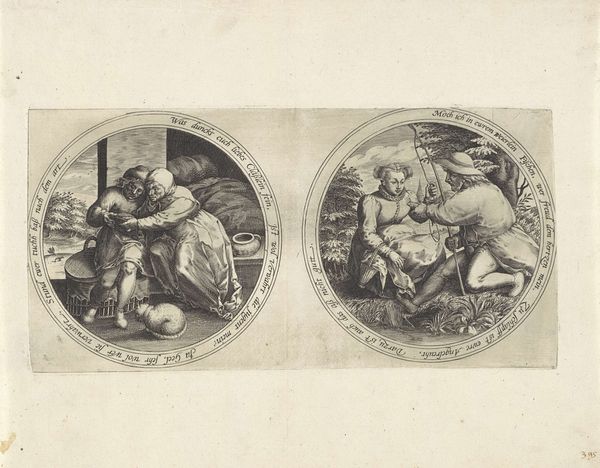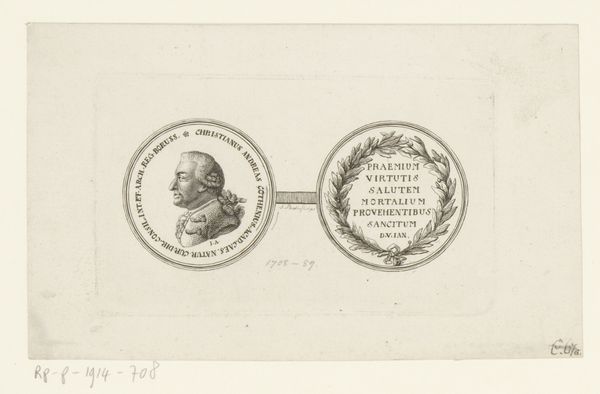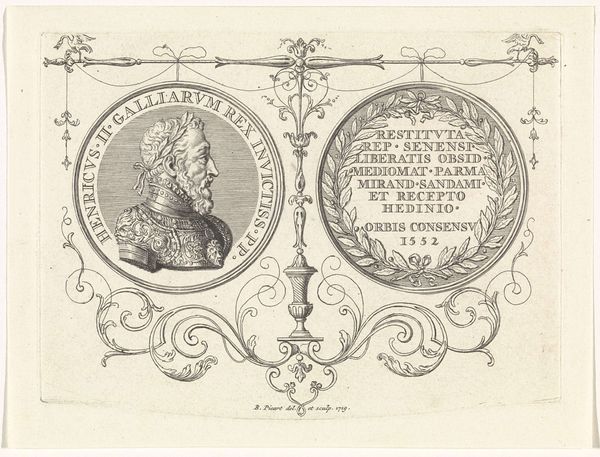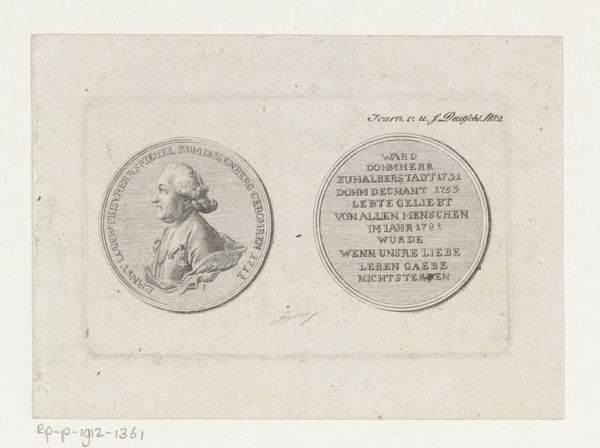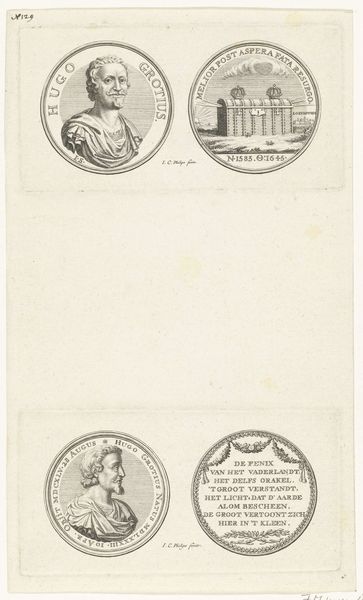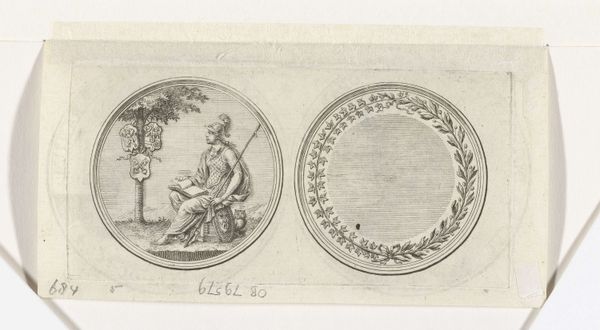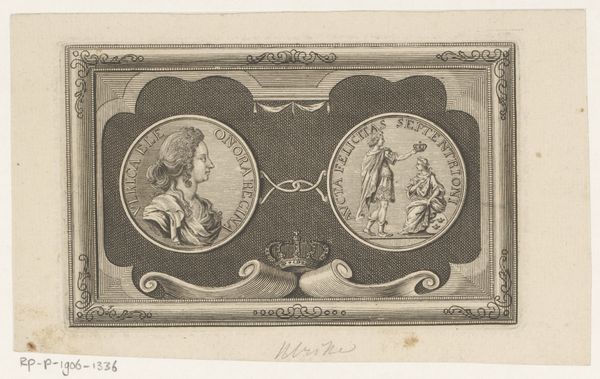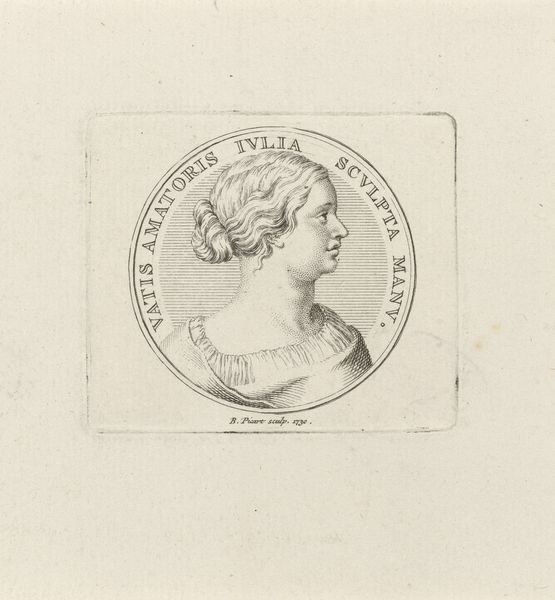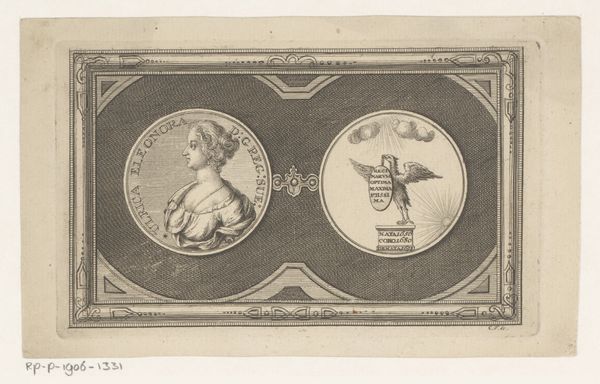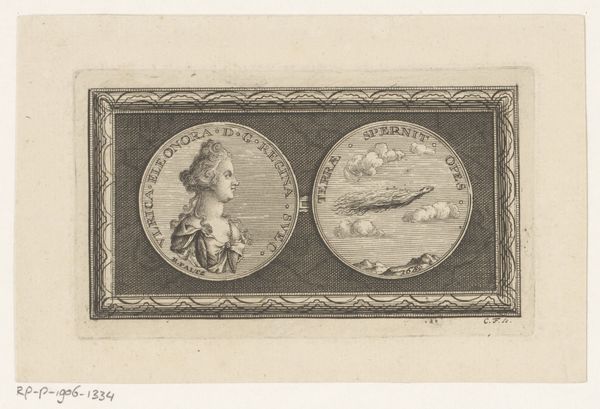
Fantasy Portrait of a Woman with a Flute, and Musical Instruments 1598 - 1602
0:00
0:00
graphic-art, engraving
#
portrait
#
graphic-art
#
old engraving style
#
mannerism
#
history-painting
#
engraving
Dimensions: diameter 46 mm, diameter 46 mm
Copyright: Rijks Museum: Open Domain
Editor: This intriguing graphic artwork, "Fantasy Portrait of a Woman with a Flute, and Musical Instruments," created by Hendrick Goltzius between 1598 and 1602, currently resides in the Rijksmuseum. It is a rather unusual double portrait within circular frames. One depicts a woman, and the other features a jumble of musical instruments. What strikes me is the social commentary implied in this contrast of portraiture and still life – how should we interpret them? Curator: Indeed, a curious piece. We must consider the public role of imagery in Goltzius's time. Notice how the "portrait" doesn't necessarily commemorate an individual, but rather a type. The second image displays the trappings of "good cheer" so to speak, thus, both emphasize the social pleasures associated with music, but in dramatically different modes of representations. What does the composition suggest to you in terms of the social function of this graphic art? Editor: I see that these roundels almost look like medals, meant to circulate through society. Would this indicate the pursuit of artistic talent through a female image could have been a virtue for aspiring musicians or their patrons? Curator: Precisely. Graphic art like this facilitated the spread of ideals, especially amongst the upwardly mobile merchant classes in the Dutch Republic. And while it’s a “fantasy portrait,” Goltzius still positions music-making within a certain social structure, a framework approved by civic morality, and open to anyone willing to participate. This raises questions about the role of patronage, and also hints towards the developing culture of virtuosity. Do you notice anything about how class is communicated through imagery? Editor: It's all in the trappings of culture, in this case music. Thinking about the intended audience makes it a window onto that society’s values, doesn't it? Thanks! Curator: Exactly! Considering how museums, galleries, and society all shape our perspective allows a deeper understanding of art and its influence.
Comments
rijksmuseum about 2 years ago
⋮
This sheet features impressions of both sides of a single medallion. Its pendant presents a fantasy portrait of a bagpiper, of which only an impression of the portrait side is known. They complemented each other and together also had an amusing function: the verses rhyme and together the images are full of erotic allusions. Flutes and bagpipes symbolized male genitalia.
Join the conversation
Join millions of artists and users on Artera today and experience the ultimate creative platform.
